.avif)
In the digital age, where consumer attention spans are fleeting, captivating your audience is only half the battle. The true challenge lies in capitalizing on that engagement by showcasing a range of your offerings—enticing them to purchase more. This is where the art of product bundling becomes a game-changer for eCommerce businesses.
Product bundling is the strategic grouping of related or complementary items at a single price point, offering a cohesive value proposition to customers. It's a win-win; consumers enjoy a perceived bargain, while sellers increase their average order value (AOV) and conversion rates (CVR). Imagine walking into a café and being offered a 'coffee and pastry' combo at a special price—tempting, isn't it?
Navigating the diverse landscape of product bundling strategies can unlock new revenue streams and enhance customer satisfaction. Each type of bundle caters to different consumer needs and preferences, offering unique advantages. Here’s a breakdown of various product bundling types, each with its distinct appeal and strategic value:
Pure bundles present an all-or-nothing proposition, creating an exclusive package that elevates the perceived value of the combined products. In a pure bundle, the items are available exclusively within that specific bundle and not separately.
For instance, consider the Dyson Airwrap, which comes with unique detachable blow-dry heads. These specific attachments are obtainable only when you opt for the entire Airwrap set, enhancing its exclusivity.

Pairing newly launched items with established favorites allows shoppers to explore the latest offerings with the reassurance of a trusted product.
Take the example of Apple, a brand that smartly boosts its latest iPhone launches by bundling them with EarPods, providing customers with an enticing package. This combination not only highlights the innovative features of the new iPhone but also offers users a premium audio accessory, enhancing the overall value and user experience.
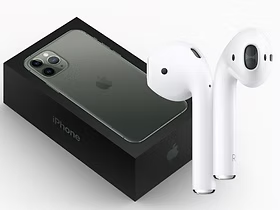
Leveraging data on shopping patterns, these bundles simplify the decision-making process for customers by suggesting complementary items, like pairing a high-end camera with a compatible tripod and carrying case, providing a complete solution for photography aficionados.
For instance, Amazon's "Frequently Bought Together" feature smartly bundles complementary products, offering customers a seamless shopping experience. It pairs an Amazfit GTS 2 Mini with a screen protector and case for $100.96, crafting an all-in-one package for tech-focused fitness enthusiasts.
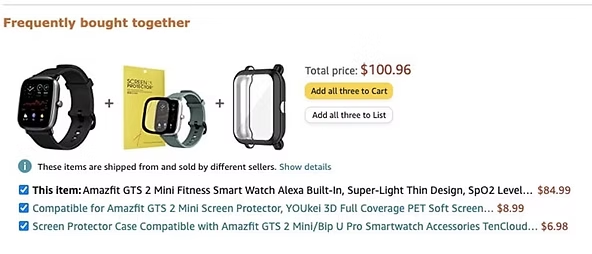
Offering a customizable bundle experience, mix and match allows customers to select from a variety of options to create a personalized package. Mixed bundling offers the flexibility of purchasing products either individually or as a combined set at a discounted rate.
A notable example is Kylie Cosmetics' lip kits. These kits pair a lip liner with a lipstick - items that are also available for individual purchase. However, when bought as a kit, they not only complement each other perfectly but also offer added value and convenience to the customer.
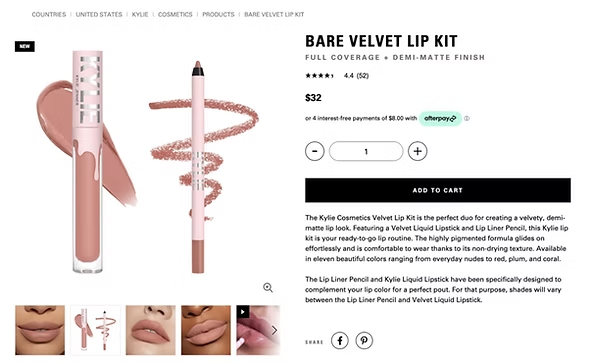
Interactive and engaging DIY bundles put the customer in the creator's seat, providing a sense of ownership and tailored satisfaction.
A good example is HVMN, a nutrition and supplement company that experienced a significant increase in its average order value by implementing a "mix and match" bundling strategy. This approach allowed customers to personalize their bundles by choosing their preferred flavors of MCT oil powder or Keto Collagen+.

Pairing slow-moving items with popular products is an effective strategy to rejuvenate stagnant inventory. It creates a fresh product offering, giving new life to overstocked items.
For instance, a clothing retailer might bundle less popular products, such as sandals and sunglasses, with a sought-after item like a summer dress. Offering this combination at a discounted bundle price not only provides value to the customer but also encourages the sale of slower-moving stock, efficiently managing inventory while appealing to bargain-seeking shoppers.
BOGO deals tap into the joy of getting more for less, often prompting customers to purchase when they might otherwise hesitate.
For instance, Bath & Body Works leverages BOGO deals to nudge customers towards purchase by offering a second item free with the first. This deal, highlighted on product pages with the price of the free item, not only increases the perceived value of their products but also encourages larger purchases, effectively driving both sales and customer satisfaction.
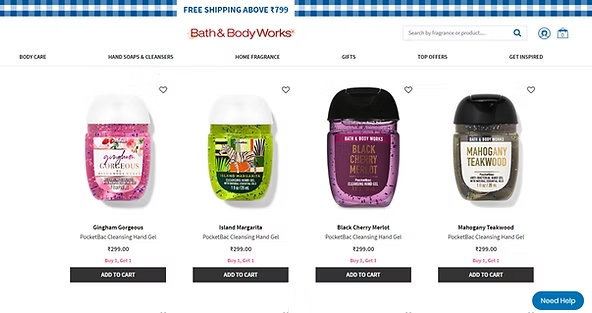
Price bundling is a strategic approach that retailers use to increase the perceived value of a purchase. By selecting specific items that are available only as a set at a discounted price or by providing a general discount on the purchase of multiple items, retailers can encourage customers to spend more. The classic buy-one-get-one (BOGO) offer is a prime example of price bundling, where the second item is perceived as a bonus, thus enhancing the overall appeal of the offer.
This tactic plays on the consumer's perception of getting more value for their money, which can be compelling enough to increase the total amount spent. Even if the bundle doesn't significantly save money, the added value of a "free" item can make the deal feel too good to pass up. It's a clever way to move inventory while making customers feel they've received a special benefit.

Subscription bundles offer convenience and the pleasure of anticipation, delivering a curated selection of products at regular intervals. Subscription boxes are a unique form of product bundling, and their appeal isn't limited to eCommerce platforms. Many physical stores are now adopting this approach to enhance customer experience and product discovery.
WineCollective, a physical wine shop, noted that customers struggled with wine selection. In response, they launched curated subscription boxes that educate and match customer preferences, easing choice paralysis and enriching the buying journey.
These bundles are carefully crafted to resonate with the spirit of the season or special occasions, offering a thematic selection of products that evoke a celebratory mood.
A great example of this approach is seen with Jo Malone, a perfume brand. On their website, the gift section showcases a variety of product bundles tailored to different price points, making it easy for customers to select a suitable, thoughtful gift. This strategy not only streamlines the shopping process but also enhances the overall customer experience, particularly during the busy holiday season.
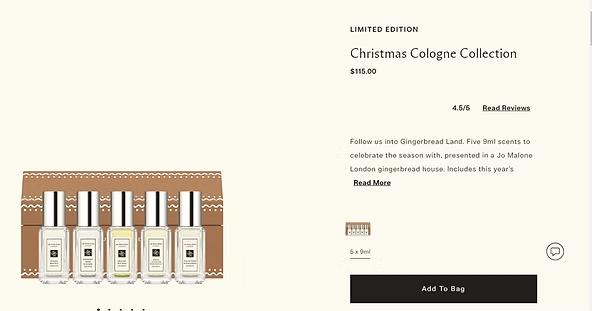
To elevate the success of your product bundling strategy, it's crucial to align closely with your customers' needs and communicate value effectively. Here are some ways to make your product bundles more appealing and successful:
To create bundles that resonate, start by segmenting your audience based on their purchasing behavior, preferences, and motivations. Analyzing customer data helps identify distinct segments and their unique needs, enabling you to tailor your bundling strategies effectively. For example, a segment interested in eco-friendly products would respond better to a bundle of sustainable goods.
Once you understand your audience segments, diversify your bundling options to cater to these different groups. This approach ensures that there is something appealing for each segment, whether it's a 'frequently bought together' bundle for practical shoppers or a 'mix and match' bundle for those who value customization. Offering a variety of bundles increases the chances of customers finding a deal that speaks directly to their needs.
Take a page from Amazon’s playbook and incorporate personalized product recommendations into your bundling strategy. Use customer browsing and purchase history to suggest relevant bundles. This level of personalization enhances the shopping experience, making customers feel understood and valued, and increases the likelihood of them finding a bundle that suits their interests.
Clear and compelling marketing is key to successful product bundling. Highlight the benefits of your bundles, such as cost savings, value addition, or convenience, across your marketing channels. Use your website, email marketing, social media, and other platforms to communicate the value proposition of your bundles. Showcasing how much customers save or the exclusive nature of bundle offers can be a powerful motivator for purchase.
Unlock the full potential of product bundling with Graas, a tool specifically engineered for deep-diving into your marketing and product analytics. This advanced tool dives into your marketing and product analytics, uncovering insights to guide your bundling strategy.
Graas' strength lies in its ability to discern which products, when bundled, can elevate your average order value and appeal to diverse customer segments. It's not just about data analysis; it's about translating those insights into profitable bundling strategies.
Experience the transformative impact of data-driven decisions on your product bundling approach.
Sign up today and witness how smart analytics can craft compelling bundles for your brand.
In the digital age, where consumer attention spans are fleeting, captivating your audience is only half the battle. The true challenge lies in capitalizing on that engagement by showcasing a range of your offerings—enticing them to purchase more. This is where the art of product bundling becomes a game-changer for eCommerce businesses.
Product bundling is the strategic grouping of related or complementary items at a single price point, offering a cohesive value proposition to customers. It's a win-win; consumers enjoy a perceived bargain, while sellers increase their average order value (AOV) and conversion rates (CVR). Imagine walking into a café and being offered a 'coffee and pastry' combo at a special price—tempting, isn't it?
Navigating the diverse landscape of product bundling strategies can unlock new revenue streams and enhance customer satisfaction. Each type of bundle caters to different consumer needs and preferences, offering unique advantages. Here’s a breakdown of various product bundling types, each with its distinct appeal and strategic value:
Pure bundles present an all-or-nothing proposition, creating an exclusive package that elevates the perceived value of the combined products. In a pure bundle, the items are available exclusively within that specific bundle and not separately.
For instance, consider the Dyson Airwrap, which comes with unique detachable blow-dry heads. These specific attachments are obtainable only when you opt for the entire Airwrap set, enhancing its exclusivity.

Pairing newly launched items with established favorites allows shoppers to explore the latest offerings with the reassurance of a trusted product.
Take the example of Apple, a brand that smartly boosts its latest iPhone launches by bundling them with EarPods, providing customers with an enticing package. This combination not only highlights the innovative features of the new iPhone but also offers users a premium audio accessory, enhancing the overall value and user experience.

Leveraging data on shopping patterns, these bundles simplify the decision-making process for customers by suggesting complementary items, like pairing a high-end camera with a compatible tripod and carrying case, providing a complete solution for photography aficionados.
For instance, Amazon's "Frequently Bought Together" feature smartly bundles complementary products, offering customers a seamless shopping experience. It pairs an Amazfit GTS 2 Mini with a screen protector and case for $100.96, crafting an all-in-one package for tech-focused fitness enthusiasts.

Offering a customizable bundle experience, mix and match allows customers to select from a variety of options to create a personalized package. Mixed bundling offers the flexibility of purchasing products either individually or as a combined set at a discounted rate.
A notable example is Kylie Cosmetics' lip kits. These kits pair a lip liner with a lipstick - items that are also available for individual purchase. However, when bought as a kit, they not only complement each other perfectly but also offer added value and convenience to the customer.

Interactive and engaging DIY bundles put the customer in the creator's seat, providing a sense of ownership and tailored satisfaction.
A good example is HVMN, a nutrition and supplement company that experienced a significant increase in its average order value by implementing a "mix and match" bundling strategy. This approach allowed customers to personalize their bundles by choosing their preferred flavors of MCT oil powder or Keto Collagen+.

Pairing slow-moving items with popular products is an effective strategy to rejuvenate stagnant inventory. It creates a fresh product offering, giving new life to overstocked items.
For instance, a clothing retailer might bundle less popular products, such as sandals and sunglasses, with a sought-after item like a summer dress. Offering this combination at a discounted bundle price not only provides value to the customer but also encourages the sale of slower-moving stock, efficiently managing inventory while appealing to bargain-seeking shoppers.
BOGO deals tap into the joy of getting more for less, often prompting customers to purchase when they might otherwise hesitate.
For instance, Bath & Body Works leverages BOGO deals to nudge customers towards purchase by offering a second item free with the first. This deal, highlighted on product pages with the price of the free item, not only increases the perceived value of their products but also encourages larger purchases, effectively driving both sales and customer satisfaction.

Price bundling is a strategic approach that retailers use to increase the perceived value of a purchase. By selecting specific items that are available only as a set at a discounted price or by providing a general discount on the purchase of multiple items, retailers can encourage customers to spend more. The classic buy-one-get-one (BOGO) offer is a prime example of price bundling, where the second item is perceived as a bonus, thus enhancing the overall appeal of the offer.
This tactic plays on the consumer's perception of getting more value for their money, which can be compelling enough to increase the total amount spent. Even if the bundle doesn't significantly save money, the added value of a "free" item can make the deal feel too good to pass up. It's a clever way to move inventory while making customers feel they've received a special benefit.

Subscription bundles offer convenience and the pleasure of anticipation, delivering a curated selection of products at regular intervals. Subscription boxes are a unique form of product bundling, and their appeal isn't limited to eCommerce platforms. Many physical stores are now adopting this approach to enhance customer experience and product discovery.
WineCollective, a physical wine shop, noted that customers struggled with wine selection. In response, they launched curated subscription boxes that educate and match customer preferences, easing choice paralysis and enriching the buying journey.
These bundles are carefully crafted to resonate with the spirit of the season or special occasions, offering a thematic selection of products that evoke a celebratory mood.
A great example of this approach is seen with Jo Malone, a perfume brand. On their website, the gift section showcases a variety of product bundles tailored to different price points, making it easy for customers to select a suitable, thoughtful gift. This strategy not only streamlines the shopping process but also enhances the overall customer experience, particularly during the busy holiday season.

To elevate the success of your product bundling strategy, it's crucial to align closely with your customers' needs and communicate value effectively. Here are some ways to make your product bundles more appealing and successful:
To create bundles that resonate, start by segmenting your audience based on their purchasing behavior, preferences, and motivations. Analyzing customer data helps identify distinct segments and their unique needs, enabling you to tailor your bundling strategies effectively. For example, a segment interested in eco-friendly products would respond better to a bundle of sustainable goods.
Once you understand your audience segments, diversify your bundling options to cater to these different groups. This approach ensures that there is something appealing for each segment, whether it's a 'frequently bought together' bundle for practical shoppers or a 'mix and match' bundle for those who value customization. Offering a variety of bundles increases the chances of customers finding a deal that speaks directly to their needs.
Take a page from Amazon’s playbook and incorporate personalized product recommendations into your bundling strategy. Use customer browsing and purchase history to suggest relevant bundles. This level of personalization enhances the shopping experience, making customers feel understood and valued, and increases the likelihood of them finding a bundle that suits their interests.
Clear and compelling marketing is key to successful product bundling. Highlight the benefits of your bundles, such as cost savings, value addition, or convenience, across your marketing channels. Use your website, email marketing, social media, and other platforms to communicate the value proposition of your bundles. Showcasing how much customers save or the exclusive nature of bundle offers can be a powerful motivator for purchase.
Unlock the full potential of product bundling with Graas, a tool specifically engineered for deep-diving into your marketing and product analytics. This advanced tool dives into your marketing and product analytics, uncovering insights to guide your bundling strategy.
Graas' strength lies in its ability to discern which products, when bundled, can elevate your average order value and appeal to diverse customer segments. It's not just about data analysis; it's about translating those insights into profitable bundling strategies.
Experience the transformative impact of data-driven decisions on your product bundling approach.
Sign up today and witness how smart analytics can craft compelling bundles for your brand.